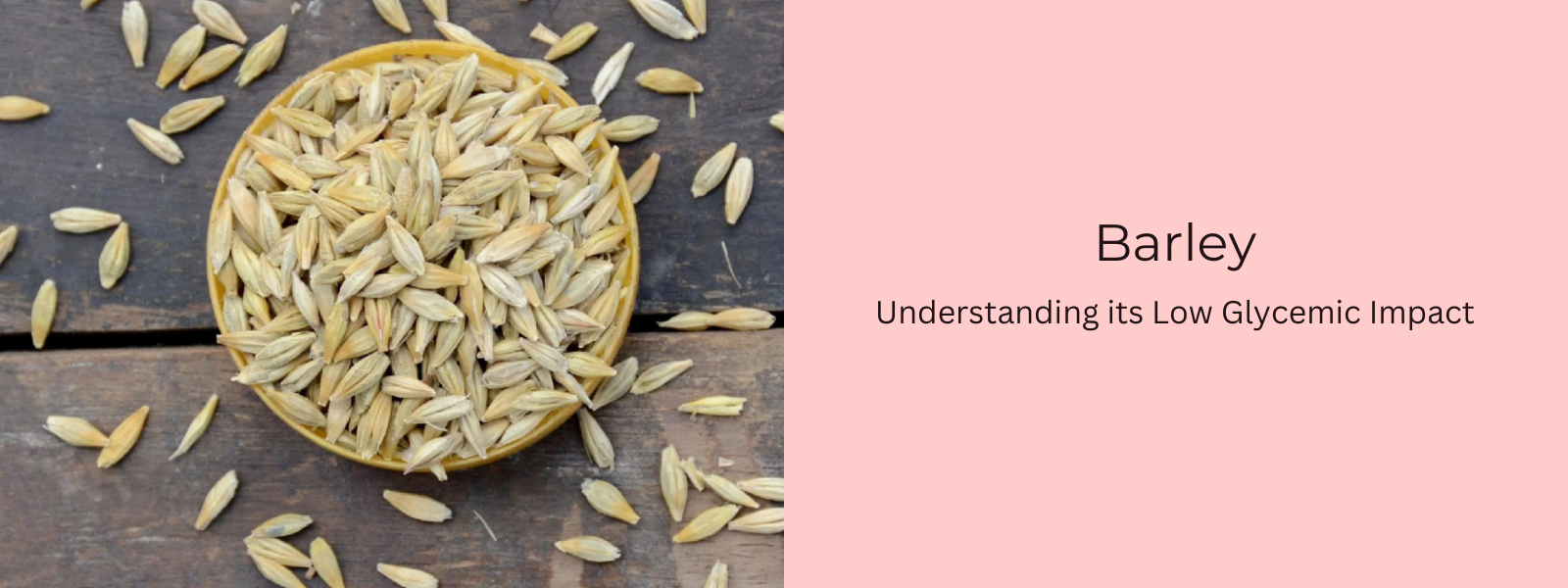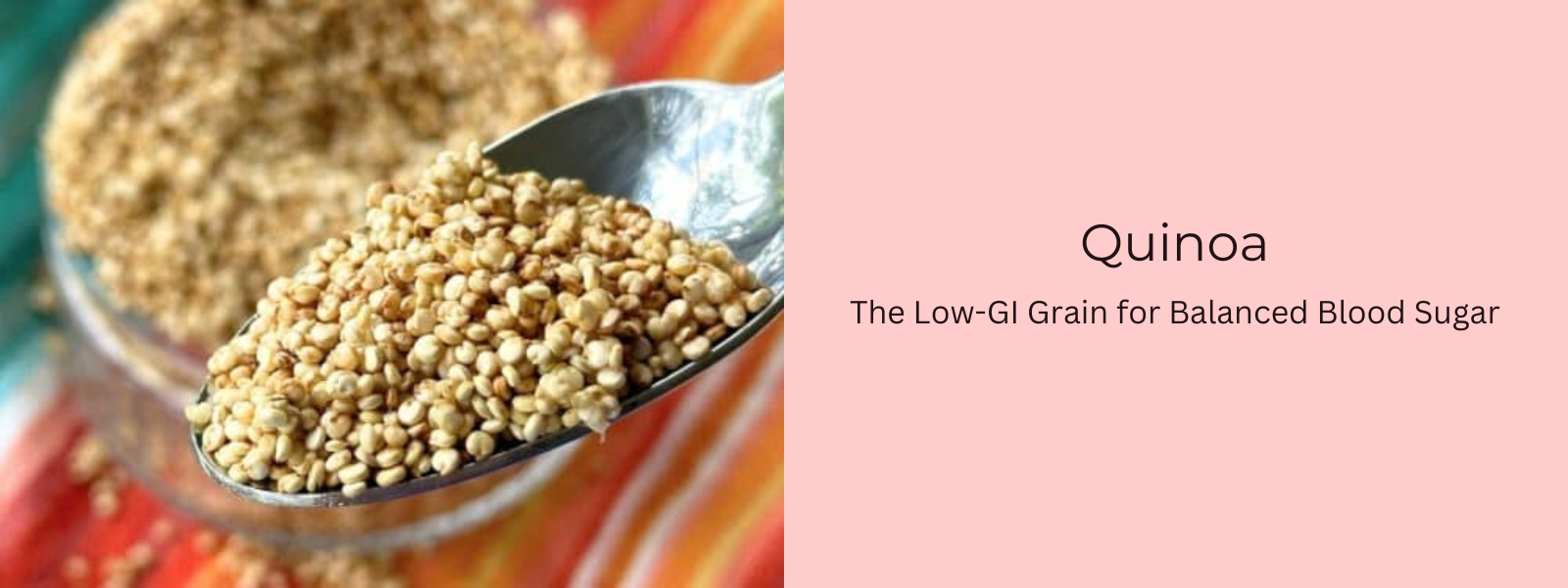Bulgur is a whole grain renowned for its low glycemic index, making it an excellent choice for those seeking to maintain stable blood sugar levels. Produced from cracked wheat berries that have been parboiled and dried, bulgur retains its nutritional integrity while offering a chewy texture and nutty flavor. Its low glycemic index means that it causes a gradual and controlled increase in blood sugar levels after consumption, aiding in the prevention of spikes and crashes. Rich in dietary fiber, particularly soluble fiber, bulgur promotes digestive health and contributes to a feeling of fullness, further supporting blood sugar regulation. Packed with essential nutrients such as vitamins, minerals, and antioxidants, bulgur is a versatile and nutritious addition to various dishes, from salads to pilafs, offering both culinary enjoyment and health benefits.
Table of Contents
What Is Bulgur?
Bulgur is a type of whole grain made from cracked wheat berries that have been parboiled, dried, and then cracked into smaller pieces. It is a staple food in Middle Eastern and Mediterranean cuisines, where it has been consumed for centuries. Bulgur is known for its chewy texture, nutty flavor, and versatility in cooking. It is often used as a base for salads, pilafs, soups, stews, and stuffing, and can also be incorporated into baked goods and breakfast dishes. Nutritionally, bulgur is rich in fiber, protein, vitamins, and minerals, making it a nutritious addition to a balanced diet. It is particularly valued for its low glycemic index, which means it causes a gradual and controlled increase in blood sugar levels after consumption, making it suitable for individuals seeking to manage their blood sugar levels effectively.
Bulgur Is A Whole Grain with Low Glycemic Goodness:
Bulgur is a whole grain derived from cracked wheat berries that have been parboiled, dried, and then cracked into smaller pieces. It is a staple in Middle Eastern and Mediterranean cuisines and is gaining popularity worldwide due to its nutritional value and versatility in cooking. Bulgur is renowned for its low glycemic index (GI), which measures how quickly carbohydrates in food raise blood sugar levels. With a low GI, bulgur causes a gradual and controlled increase in blood sugar levels after consumption, making it an ideal choice for individuals seeking to manage their blood sugar levels effectively, including those with diabetes or those looking to prevent blood sugar spikes and crashes.
One of the key factors contributing to bulgur's low glycemic impact is its high fiber content. Bulgur is rich in dietary fiber, particularly soluble fiber, which slows down the absorption of carbohydrates in the digestive tract. This leads to a slower and more controlled release of glucose into the bloodstream, helping to maintain stable blood sugar levels over time. Additionally, the fiber in bulgur promotes digestive health by supporting regular bowel movements and reducing the risk of constipation.
In addition to fiber, bulgur is a good source of complex carbohydrates, which provide sustained energy without causing rapid fluctuations in blood sugar levels. It also contains essential nutrients such as vitamins, minerals, and antioxidants, including vitamin B6, iron, magnesium, and manganese. These nutrients play important roles in various bodily functions, including energy metabolism, immune function, and cellular protection against oxidative stress.
Bulgur is incredibly versatile and can be used in a wide range of dishes, from salads and pilafs to soups, stews, and breakfast bowls. It has a chewy texture and nutty flavor that adds depth and complexity to recipes. Bulgur is quick and easy to prepare, requiring minimal cooking time compared to other whole grains, making it a convenient option for busy individuals and families.
Benefits of Bulgur For Diabetics:
Bulgur offers several benefits for individuals with diabetes:
- Low Glycemic Index (GI): Bulgur has a low glycemic index, meaning it causes a gradual and controlled increase in blood sugar levels after consumption. This helps prevent sudden spikes and crashes in blood sugar levels, making it suitable for individuals with diabetes or those looking to manage their blood sugar effectively.
- High Fiber Content: Bulgur is rich in dietary fiber, particularly soluble fiber, which slows down the absorption of carbohydrates in the digestive tract. This results in a slower release of glucose into the bloodstream, promoting more stable blood sugar levels over time. Additionally, fiber helps promote satiety and may aid in weight management, which is important for controlling blood sugar levels.
- Nutrient Density: Bulgur is a good source of essential nutrients such as vitamins, minerals, and antioxidants. It contains vitamins B6, iron, magnesium, manganese, and other nutrients that play important roles in maintaining overall health and well-being. These nutrients are particularly beneficial for individuals with diabetes, as they support various bodily functions and help mitigate the risk of complications associated with the condition.
- Versatility in Cooking: Bulgur is incredibly versatile and can be used in a wide range of dishes, from salads and pilafs to soups, stews, and breakfast bowls. Its chewy texture and nutty flavor make it a delicious addition to both savory and sweet recipes. By incorporating bulgur into meals, individuals with diabetes can enjoy a diverse and flavorful diet while reaping the health benefits it offers for blood sugar control.
Healthy Bulgur Recipes:
Bulgur offers several benefits for individuals with diabetes:
Tabbouleh Salad:
- Ingredients:
- 1 cup bulgur
- 2 cups chopped fresh parsley
- 1/2 cup chopped fresh mint
- 1/2 cup diced tomatoes
- 1/4 cup diced red onion
- 1/4 cup lemon juice
- 2 tablespoons olive oil
- Salt and pepper to taste
- Instructions:
- Rinse the bulgur in cold water, then drain.
- Place bulgur in a bowl and cover with boiling water. Let it sit for about 15-20 minutes until tender.
- Fluff the bulgur with a fork and let it cool.
- In a large bowl, combine the cooled bulgur with parsley, mint, tomatoes, and red onion.
- In a small bowl, whisk together lemon juice, olive oil, salt, and pepper. Pour over the salad and toss to combine.
- Serve chilled or at room temperature.
Bulgur-Stuffed Peppers:
- Ingredients:
- 4 large bell peppers, halved and seeds removed
- 1 cup bulgur
- 1 1/2 cups vegetable broth
- 1 can (15 oz) black beans, drained and rinsed
- 1 cup corn kernels (fresh, frozen, or canned)
- 1 cup diced tomatoes
- 1 teaspoon cumin
- 1 teaspoon chili powder
- Salt and pepper to taste
- Optional toppings: shredded cheese, avocado slices, cilantro
- Instructions:
- Preheat the oven to 375°F (190°C).
- In a saucepan, bring the vegetable broth to a boil. Add the bulgur, reduce heat to low, cover, and simmer for about 10-12 minutes until the bulgur is tender and liquid is absorbed.
- In a large bowl, combine cooked bulgur, black beans, corn, diced tomatoes, cumin, chili powder, salt, and pepper.
- Stuff each bell pepper half with the bulgur mixture.
- Place stuffed peppers in a baking dish, cover with foil, and bake for 25-30 minutes until peppers are tender.
- Remove foil, sprinkle with cheese if desired, and bake for an additional 5 minutes until cheese is melted and bubbly.
- Serve hot, garnished with avocado slices and cilantro if desired.
Bulgur Breakfast Bowl:
- Ingredients:
- 1/2 cup bulgur
- 1 cup almond milk (or any milk of your choice)
- 1 tablespoon honey or maple syrup
- 1/2 teaspoon cinnamon
- 1/2 cup sliced fresh fruit (such as bananas, berries, or apples)
- 2 tablespoons chopped nuts (such as almonds, walnuts, or pecans)
- Instructions:
- In a saucepan, combine bulgur and almond milk. Bring to a boil, then reduce heat to low, cover, and simmer for about 10-12 minutes until bulgur is tender and liquid is absorbed.
- Stir in honey or maple syrup and cinnamon.
- Transfer the cooked bulgur to a bowl.
- Top with sliced fresh fruit and chopped nuts.
- 5. Serve warm and enjoy as a nutritious breakfast option.











Leave a comment